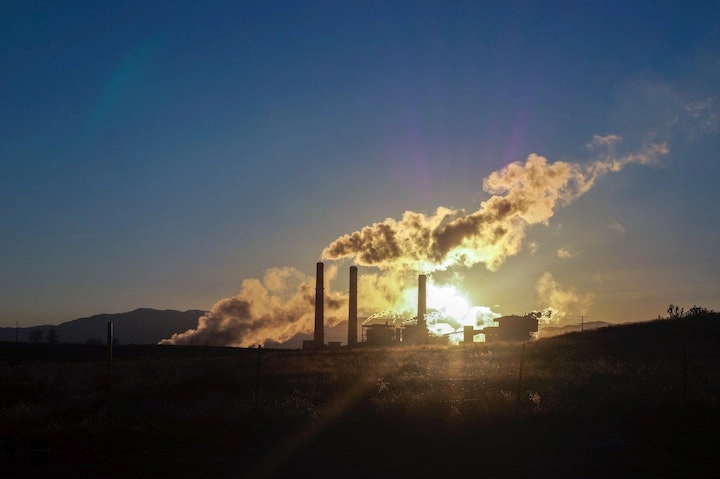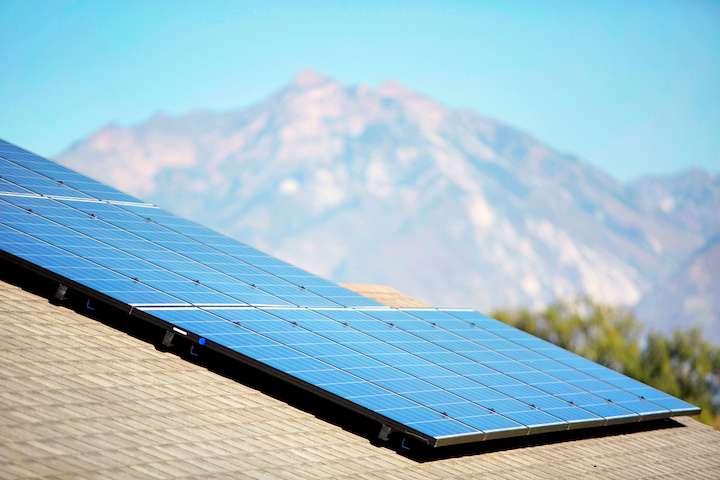
Earth’s climate has gone through many cycles and changes throughout history, with the last ice age ending almost 12,000 years ago and marking the beginning of the modern climate era and of human civilization.
Scientists and environmental experts claim that the average global temperature is increasing due to carbon dioxide and other greenhouse gases absorbing sunlight and solar radiation from the earth’s surface. Instead of getting released back into the atmosphere, this radiation is trapped by the pollutants and cause the planet to get warmer.
Over the past fifty years, the global temperature has been increasing in unprecedented amounts compared to the last few thousands of years. Experts believe that this is due to human activity in the last century, and there is evidence to back that claim: 15 out of 16 of the hottest years recorded by NASA have occurred since the year 2000, with 2016 and 2020 being the hottest years on record.
Other evidence for climate change includes the rising temperatures of the ocean, melting ice and glacial retreat, rising sea levels and extreme weather events.

Why Does this Matter?
The earth is getting hotter, so what? Isn’t that the price we just have to pay for electricity, modern technology, and the way we live life? Scientists have already seen the effects of climate change such as shrunken glaciers, shifts in animal and plant ranges, the sea levels rising, and intense heat waves.
If trends continue and temperatures continue to rise, there will be more weather changes and changes in precipitation, droughts and extreme heat waves, stronger hurricanes, and flooding from rising sea levels, erosion, heavier downpours, insect outbreaks, and increased wildfires. All of this will in turn affect human civilization, from lower agricultural yields, less water supplies, and health and safety impacts from high heat and flooding, not to mention the economic impact it would have globally.
What Can Be Done?
Clearly, climate change is a complex global issue and there is no obvious or easy solution. Greenhouse gases linger in the atmosphere for centuries, so even if we stopped emitting them today, climate change would continue to affect future generations. However, there are ways we can reduce carbon emissions and mitigate the levels of greenhouse gases currently being released into the atmosphere.
In order to reduce climate change, we must reduce the flow of greenhouse gas emissions into the atmosphere. The objective is to reduce human interference with the climate and to give ecosystems time to adapt to the climate change so that it doesn’t affect food production and economic development. A major way to do this is by reducing the source of greenhouse gases.
The Environmental Impact of Solar Panels
When solar panels are installed, they start to produce clean energy that will be used in place of energy from a power plant that releases harmful carbon emissions into the air. The energy produced from solar panels does not require any fossil fuels to produce. Over the typical 25-year life span of a solar system, the average household in the United States will use about 180,000 kilowatts of electricity.
To produce this much power over this time, a power plant will utilize coal to heat water to high temperatures, which turns a generator and produces electricity. To provide 180,000 kilowatts of electricity, a power plant will burn about 80 tons of coal.
Over the average 25-year lifespan of a solar system, it will offset 80 tons of coal. This means that the panels are preventing 80 tons of coal from being used for energy production. To put it in perspective, these 80 tons of coal are the equivalent of the emissions generated by 150 tons of carbon dioxide. It is also equivalent to planting 4,000 trees or taking two cars off the streets that would have driven 200,000 miles each!
The use of solar panels for electricity production will also reduce overall water usage. Power plants not only require coal that causes poor local air quality, but they also use millions of gallons of water to produce power and cool down factory generators and machines. By going solar, the typical American will decrease their overall water usage by 4 million gallons.
These huge savings will allow local ecosystems that have been stripped of water to rebuild and hopefully return to a state where both animals and plants can flourish.
The Average Blue Raven Solar System will Offset 175 Tons of Carbon Dioxide Over its Lifetime. That’s Like:

Room for Improvement
While the clean energy produced by the average solar system over the course of 25 years contributes positively to the environment, there is still room for improvement when it comes to the manufacturing, transportation, and recycling of solar panels. Solar panels require a lot of energy to produce, and there are hazardous chemicals involved in the manufacturing of solar panels that all companies may not dispose of correctly.
The solar industry has gained popularity in the last decades and is growing quickly, but there is still plenty of room for improvement when it comes to the creation, transportation, efficiency, and disposal of solar panels. No renewable energy source is perfectly sustainable but will still shine in comparison to its alternative of harmful fossil fuels (coal produces 25 times more carbon dioxide than solar energy).
So, can solar customers be sure that the initial carbon footprint associated with the manufacturing and shipment process of their solar panels will be quickly offset by the clean energy produced by the solar system?
To answer this question, we can take a look at the energy payback period of solar panels. Similar to a return-on-investment (ROI) or a payback period of a financial investment, the energy payback period of solar panels is how long it will take for a solar power system to generate enough energy to offset the energy it took to produce.
While it may vary depending on location due to different weather patterns and sunlight, the energy payback period for most solar customers will be one to two years. This means that after a year or two, they will have produced enough clean energy to offset the energy it took to create their solar panels. The energy that they produce after this period is positively impacting the environment and will continue do so for more than 20 years.

Solar is the Future of Energy
Even taking into consideration the manufacturing process of the panels, solar power provides a substantial positive net impact on the environment. Switching to solar is one of the most effective things a citizen of the world can do to reduce their carbon footprint and prevent harmful carbon emissions from being released into the atmosphere.
However, in order to make a considerable difference regarding climate change, solar power and other renewable energy sources must continue to grow and become the norm when it comes to power production. Despite the rapid growth in popularity over the last few decades, in 2019, only 2% of the world’s electricity generation came from solar panels.
Thousands of solar companies and solar advocates are working to educate and help homeowners make the switch to clean, renewable energy.
Blue Raven Solar is dedicated to making homeowners’ lives better by not only helping them to have a positive impact on the environment, but also by helping them save thousands of dollars along the way. When you produce your own energy, you don’t have to pay the utility company for energy that is harmful to the environment anyways.
To see how much you could save by switching to solar, fill out the form and one of our solar specialists will provide you with a quote for your home.



Sorry, the comment form is closed at this time.